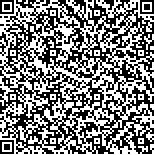下载中心
优秀审稿专家
优秀论文
相关链接
摘要

风云三号(FY-3)的微波成像仪(MWRI)能够全天候获取全球大气水汽含量、云雨参数及海面温度等的空间分布,并可为数值天气预报提供初始场信息进而提高天气预报的准确性。但FY-3C MWRI O-B(O是卫星观测亮温,B是数值天气预报模式模拟亮温)偏差结果存在较大升降轨差异,严重制约了遥感信息的正确提取以及在数值天气预报模式中的业务同化应用。本文通过分析定标方程各参数:定标黑体物理温度、热反射镜背瓣亮温、热反射镜物理温度、冷空反射镜物理温度、接收通道温度、黑体观测计数值、冷空观测计数值、定标斜率、定标截距,并对定标方程各项进行敏感性分析,找出了引起MWRI升降轨偏差的主要原因是热反射镜的发射率异常增大引起的。经过不断调整MWRI的热反射镜发射率,使升轨O-B与降轨O-B的概率分布逐渐重合,初步估算了热反射镜发射率。本文的订正方法可指导未来仪器的发展,并为直接同化MWRI辐射数据提供了条件。
关键词:
遥感 风云三号(FY-3) 微波成像仪 定标 升降轨偏差The Microwave Radiometer Imager (MWRI) onboard FY-3C satellites was successfully launched on December 23, 2013. MWRI observes the Earth's atmosphere and surface at 10.65, 18.7, 23.8, 36.5, and 89.0 GHz with dual polarization and can provide an important initial field for Numerical Weather Prediction (NWP). However, the O-B (observation minus simulation) of MWRI shows a clear bias difference between ascending and descending orbits. The magnitude of this ascending-descending bias is approximately 2 K for all channels, thereby restricting its operational application in NWP data assimilation systems. This research analyzes the causes of the bias and makes appropriate corrections.
The parameters of the calibration equation were analyzed, including physical temperature of the warm load, brightness temperature of the hot reflector's back-lobe, physical temperature of the hot reflector, physical temperature of the cold reflector, receiver channel instrument temperature, warm load radiometric counts, cold space radiometric counts, antenna brightness temperature calibration scale, antenna brightness temperature calibration offset, and a sensitivity analysis of each term of the calibration equation was conducted. Results indicated that high values of the hot load reflector are the main causes of the bias. The reflector was heated periodically by incident solar radiation and emitted a variable radiation with space and time, which caused the ascending-descending bias. Thus, the brightness temperature was simulated using the basic atmospheric parameters of ERA5 in conjunction with the radiative transfer model known as RTTOV. With the principle that the probability density difference between the O-B of ascending and descending orbits is minimum, the emissivity of the hot load reflector is estimated.
Results show that before adjusting the emissivity of the hot reflector, the probability density plot of the O-B of ascending and descending orbits was separated. After correction, the bias difference between the ascending and descending orbits were clearly reduced, thereby identifying the main error source of the ascending-descending bias. Such identification can guide the development of future instruments and provide the condition for direct assimilation of MWRI radiance data.
Although the accuracy of NWP fields, the radiative transfer model, calibration, and cloud detection are not the main error source of the ascending-descending bias, they may affect the estimation accuracy of the emissivity of the hot load reflector. Thus, strict quality control should be carried out in the future, and after the samples of greater uncertainty are eliminated, more accurate on-orbit emissivity of the hot load reflector can be estimated.

